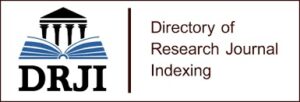Relationships between Countermovement Jump variables and Tensiomyography analysis as an indicator of fatigue in elite soccer players
Purpose: The purpose of the present study was to determine the correlations between the values of Counter Movement Jump (CMJ) and Tensiomyography (TMG) in a match day -1 training session, with 12 elite soccer players from English Premier League (Age: 26.3+- 1.8; Weight: 82.1 +- 3.3; Height: 1.81 cm +- 6.9; BMI: 23,24 +- 1,37)
Methods: Physical tests (CMJ) were carried out at the end of the activation in the gym and before training in the field, in the MD-1 session, while the TMG (Rectus Femoris, Biceps Femoris and adductor longus) was carried out immediately before of activation in GYM. Correlation coefficient between the different variables of CMJ and TMG were established and analyzed.
Results: A high negative correlation (-0.95) was established between the Ts- sustain time (right leg) and the duration of the eccentric phase of the CMJ, as well as a moderate-high negative correlation (-0.73) between the Tr- relaxation time (left leg) and the duration of the eccentric phase in the CMJ in the adductor longus (AL) musculature. A moderate correlation (0.56) was also observed between Td- delay time (left leg) and the duration of the eccentric phase in CMJ in Biceps Femoris (BF) and a moderate-high correlation (0.65) between Td- delay time (right leg) and the duration of the eccentric phase in rectus femoris (RFA).
Conclusions: The main finding of this research is that here is a relationship between TMG (rectus femoris, biceps femoris and adductor longus) in Td, Tr and Ts and values in CMJ (eccentric duration and Flying Time: Contact time) ), in order to monitoring fatigue in the last day of microcycle, prior to match day.
Keywords: Fatigue, countermovement jump, tensiomyography




















